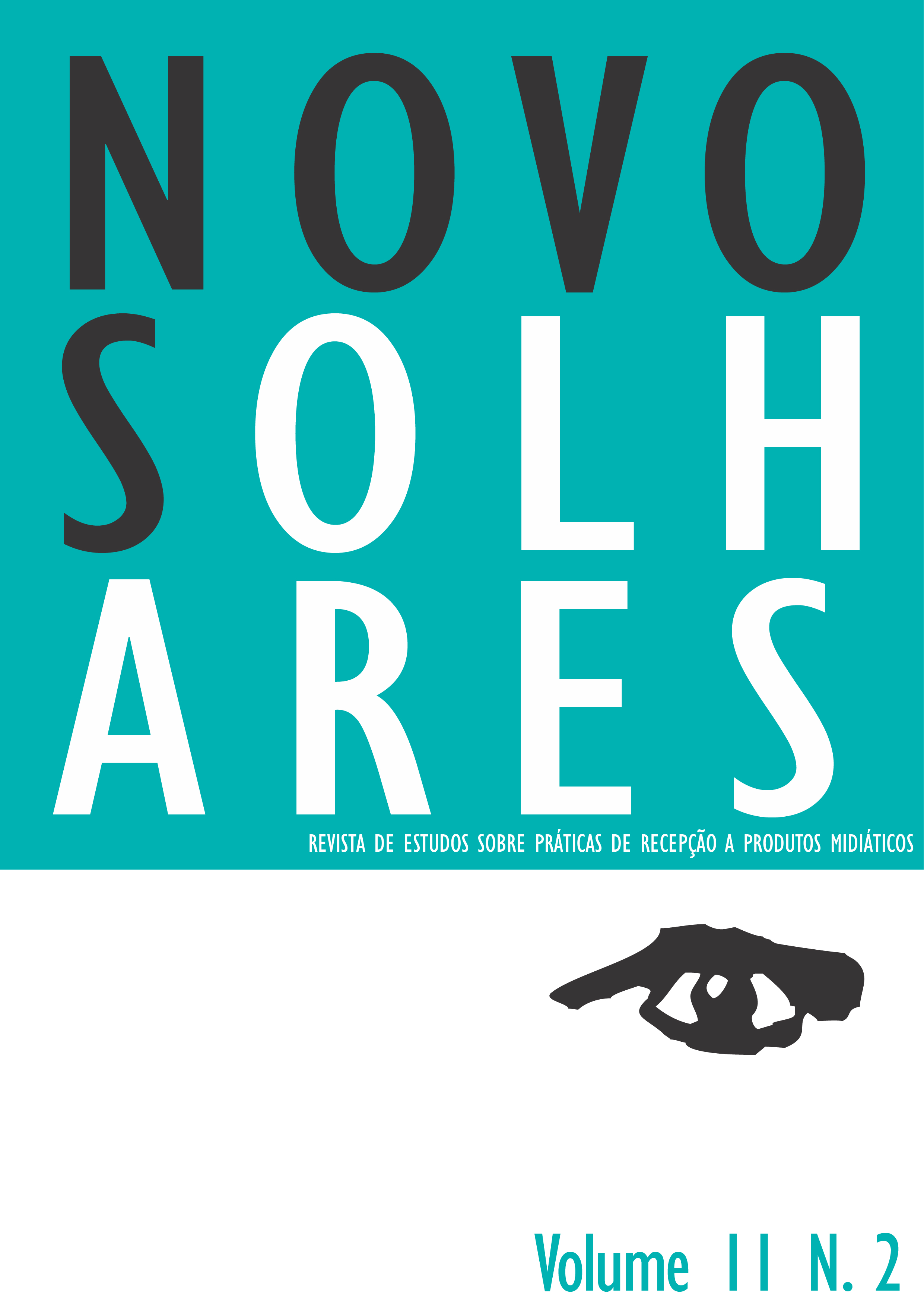Seguimiento ocular: del afecto al concepto visual
DOI:
https://doi.org/10.11606/issn.2238-7714.no.2022.205284Palabras clave:
Seguimiento ocular, Afecto, Concepto, Imagen, VisiónResumen
Nuestro examen de las técnicas clásicas de seguimiento ocular del psicólogo ruso Alfred L. Yarbus para determinar la atención visual mediante la medición de la posición y el movimiento de los ojos, postula una base empírica incorporada para la cognición basada en el concepto bergsoniano de la imagen en contraposición a la aún ampliamente aceptada concepción fotográfica de la visión. Utilizando el pensamiento de Spinoza, James, Bergson, Simondon, y Deleuze y Guattari nuestra intención es producir un modelo especulativo de percepción visual que armonice la metafísica afectiva y la producción de conceptos a través de la visión.
Descargas
Referencias
Bergson, H. (1991). Matter and Memory. (N. M. Paul & W. S. Palmer, Trans.). Zone Books.
Deleuze, G. (1993) The Fold. (T. Conley, Trans.). University of Minnesota Press.
Deleuze, G. (1988). Spinoza: Practical Philosophy. (R. Hurley, Trans.). City Lights Books.
Deleuze, G. & Guattari, F. (1994). What is Philosophy? (G. Burchell and H. Tomlinson, Trans.). Columbia University Press.
Deleuze, G. & Guattari, F. (1987). A Thousand Plateaus. (B. Massumi, Trans.). University of Minnesota Press.
Duchowski, A. T. (2017). Eye Tracking Methodology: Theory and Practice (3rd ed.). Springer International Publishing AG.
Forrester, J. V., Dick, A. D., McMenamin, P. G., Roberts, F., Pearlman, E. (2016). The Eye: Basic Sciences in Practice. (4th ed.). Elsevier.
Freud, S. (1955). The Standard Edition of the Psychological Works of Sigmund Freud. Vol. X. Two Case Histories (‘Little Hans’ and the ‘Rat Man’). (J. Strachey, Trans.). Hogarth Press.
James, W. (1912). Essays in Radical Empiricism. Longmans, Green, and Co.
James, W. (1943). Pragmatism. Meridian Books.
Massumi, B. (2018). 99 Theses on the Revaluation of Value: A Postcapitalist Manifesto. University of Minnesota Press.
Netter, Frank H. (2002). Atlas of Neuroanatomy and Neurophysiology: Selections from the Netter Collection of Medical Illustrations. Icon Custom Communications.
Rebolledo, F. & Oliveira, A. M. (2020). Imagistic Projection as Relational Becoming. In G. Menotti & V. Crisp (Eds.). Practices of Projection: Histories and Technologies (pp. 253-281). Oxford University Press.
Simondon, G. (2005). L’Individuation à la lumière des notions de forme et d’information. Millon.
Simondon, G. (2017). On the Mode of Existence of Technical Objects. (C. Malaspina and J. Rogove, Trans.). Univocal.
Spinoza, B. (1996). Ethics. (E. S. Curley, Trans.). Penguin.
Tarr, B. & Hranitzky, Á. (Directors). (2011). The Turin Horse [Film: A torinói ló]. T. T. Filmműhely.
The Wachowskis. (Directors). (1999). The Matrix [Film]. Warner Bros.; Village Roadshow Pictures; Groucho II Film Partnership; Silver Pictures.
Yarbus, A. L. (1967). Eye Movements and Vision. Plenum Press.
Descargas
Publicado
Número
Sección
Licencia
Derechos de autor 2023 Professor

Esta obra está bajo una licencia internacional Creative Commons Atribución-NoComercial-SinDerivadas 4.0.
Proposta de Aviso de Direito Autoral Creative Commons
1. Proposta de Política para Periódicos de Acesso Livre
Autores que publicam nesta revista concordam com os seguintes termos:
- Autores mantém os direitos autorais e concedem à revista o direito de primeira publicação, com o trabalho simultaneamente licenciado sob a Licença Creative Commons Attribution CC Attribution-NonCommercial-NoDerivatives 4.0, que permite o compartilhamento do trabalho com reconhecimento da autoria e publicação inicial nesta revista.
- Autores têm autorização para assumir contratos adicionais separadamente, para distribuição não-exclusiva da versão do trabalho publicada nesta revista (ex.: publicar em repositório institucional ou como capítulo de livro), com reconhecimento de autoria e publicação inicial nesta revista.
- Autores têm permissão e são estimulados a publicar e distribuir seu trabalho online (ex.: em repositórios institucionais ou na sua página pessoal) a qualquer ponto antes ou durante o processo editorial, já que isso pode gerar alterações produtivas, bem como aumentar o impacto e a citação do trabalho publicado.



